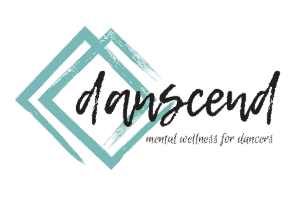
HEALTH & WELL-BEING FOR ALL DANCERS
Rhee Gold's DanceLife is proud to support dance educators in caring for the mental wellness of both themselves and their dancers with these free resources. We have partnered with Mindful Dancers Wellness Studio and Danscend to bring you new prodcuts, free resources, information, programs, certification and more; all designed to assist you in prioritizing mental wellness both in and out of the studio. Together we can make a difference!
Additional Information & Resources

Some dancers wear their perfectionism as a badge of honor. Others hide behind it and shy away from everyday challenges. Even more, the idea of encouraging a perfectionist dancer (or not) can be polarizing and emotionally charged for dance teachers and concerned parents and guardians.
So, which is it? Is perfectionism a good thing or a bad thing? Well, the answer is more gray than black or white. Perfectionism is neither good nor bad. Healthy perfectionism means setting high goals or standards for oneself. That’s great! We want all dancers to set high goals! Unhealthy perfectionism occurs when those goals are so high as to be impossible. A child who believes that she must be perfect, or produce perfect work at all times, will clearly become very unhappy, as it is impossible for her to ever meet her goals. While the general population contains approximately 30% perfectionists, the percentage of perfectionists among the gifted population is more than 80%.
And in the performing arts, it’s even more difficult. Our selves – our bodies, our feelings, our interpretations of the art we perform are put on stage or camera to be judged by people we don’t even know. Have you ever read a bad review of an actor in a film? How do you think that impacts that actor if they have perfectionist tendencies? The simple structure of dance as a performing art and/or a competitive medium can exacerbate perfectionist tendencies in young people.
So, how do we work to combat unhealthy perfectionism in the dance classroom? Here are three suggestions:
- Model mistakes - share your own imperfections and insecurities. Whether it’s a choreography mistake or a frustration in the classroom, take time to talk about it, unpack it, ask for suggestions, and fix it. Talk about your frustrations, the strategies that you used to cope, and don’t forget to add in some positive self-talk.
- Impose boundaries - It’s counterintuitive, but try not to allow your overactive students with perfectionist tendencies take more than a certain amount of classes in a week, require them to sit down for 30 minutes to eat, and have mandatory rest breaks. You can even talk about the importance of rest to progress in dance technique!
- Talk to parents and guardians - If you feel a student is struggling with perfectionism and doesn’t seem to be able to move past it, consider speaking to their parents or guardians. Share with parents only what you’ve observed in class (not a diagnosis or assumption) and see how they respond. Ask them to help you encourage their young people to make mistakes and to let you know how you can best support their child in their dance journey.
Want to actively help dancers pursue a healthier and happier mindset in the dance classroom? Check out Danscend’s Mental Wellness Worksheets. This ten worksheet packet covers topics like coping with rejection, exploring body image, shifting negative self-talk, reducing stress, and yes…perfectionism.






